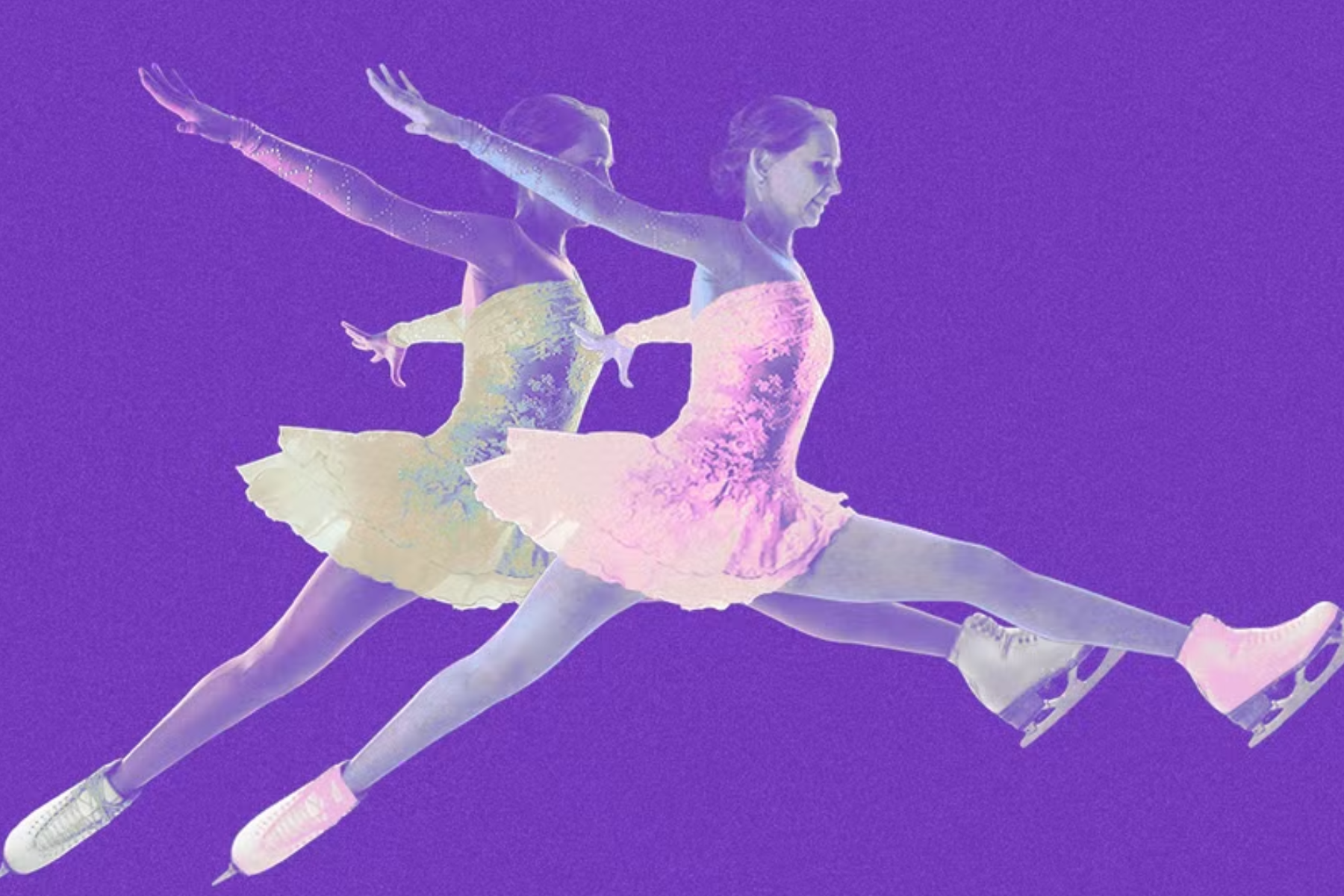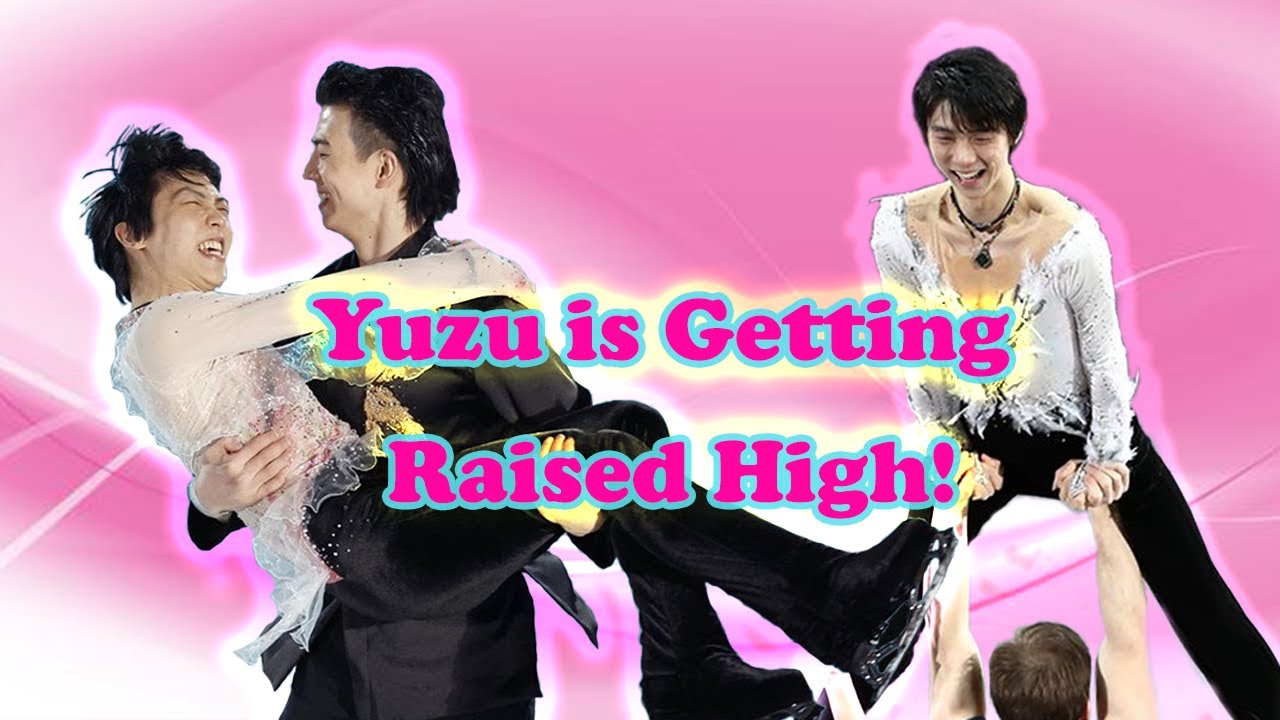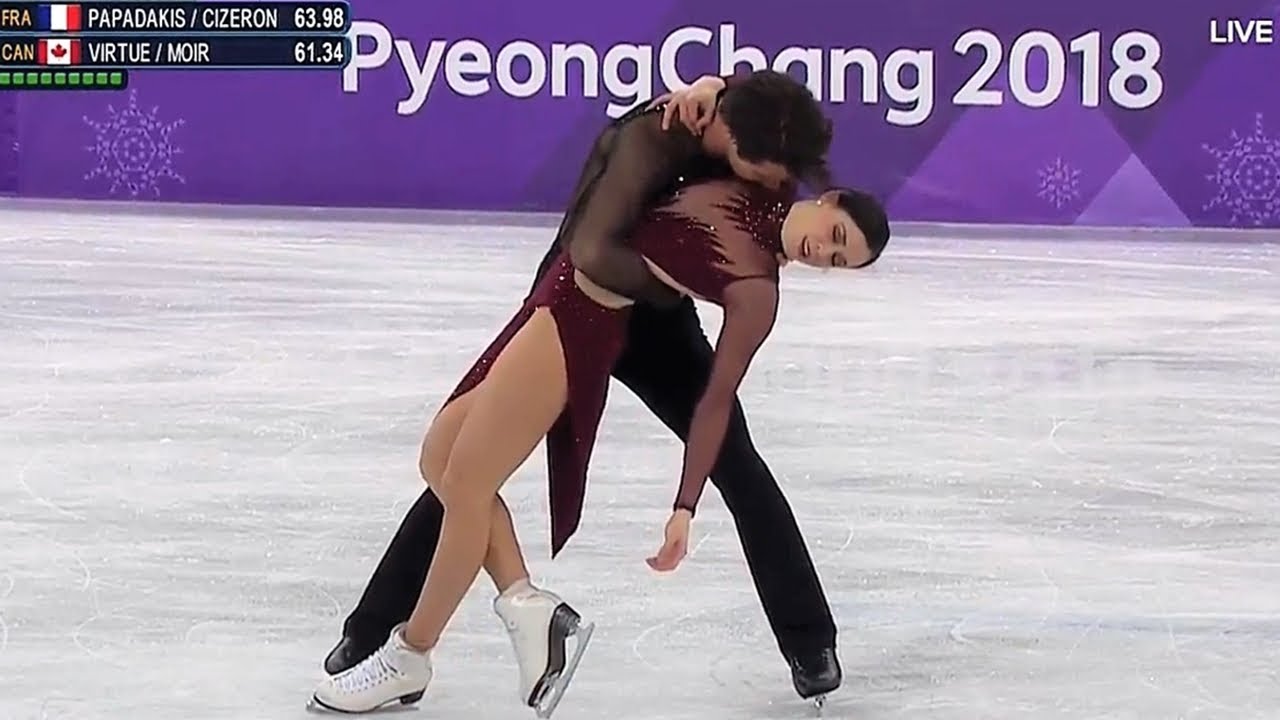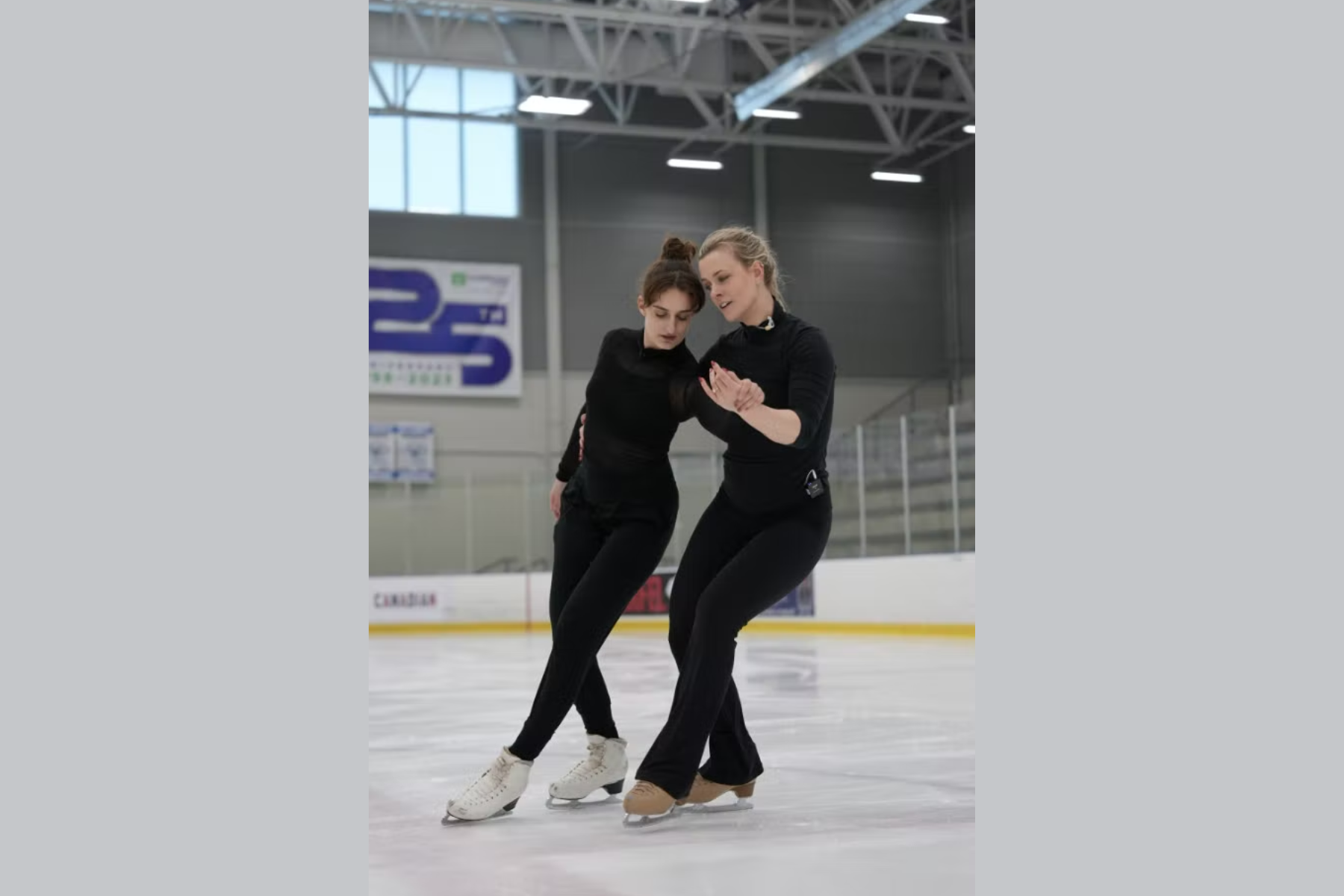The Once Unthinkable Revolution Coming To Figure Skating
The once unthinkable revolution coming to figure skating. It was the spring of 2022, and the Winter Olympics season had come to an end. Two of figure skating's most renowned athletes circled each other with ease under the glare of fluorescent lights in a largely empty stadium in London, Ontario.
Author:Gabriel MartinezReviewer:Daniel ClarkApr 23, 202315 Shares850 Views

The once unthinkable revolution coming to figure skating. It was the spring of 2022, and the Winter Olympics season had come to an end. Two of figure skating's most renowned athletes circled each other with ease under the glare of fluorescent lights in a largely empty stadium in London, Ontario.
Same-Gender Pair Skating Prohibited By ISU Regulations
Four years, thrown off by the pandemic, injuries, and sicknesses, had just ended with each getting medals they'd worked for their entire lives. They clasped each other's hands and glided over the ice, with no approaching competition, pressure, or expectations.
They began to dance as the piano boomed over the sound system, their bodies smoothly synchronizing, limbs stretching in identical lines, torsos coiling. With their arms tightly wrapped around each other, they unfurled to spin in circles indefinitely.
They alternated between cutting over the ice and giggling at a botched move, and improvisation became choreography. They practiced a Fred Astaire-style dip until it became second nature. The pair established a new rhythm, first cheek to cheek, then widely apart with a single push.

All Times Yuzuru Hanyu was Lifted by Other Skaters
You'd never suspect they'd never competed together by the way they moved in perfect unison. They appeared to be professionals. But they had one thing in common: they were both women.
Skating as a team has long been prohibited for close friends like Gabriella Papadakis and Madison Hubbell, as well as any two-figure skaters who desire to compete with a same-gender partner.
The International Skating Union, or ISU, specifically prohibits competing with same-gender teams.
Skate Canada's Removal Of Gendered Language Opens Door For Same-Gender Pairs In Competition
Pair skating and ice dance teams have both been designated as "one Woman and one Man" since the 1950s and while athletes of the same gender can skate together in synchronized skating, which features teams of eight to sixteen, competitive rules for teams of two have remained strictly man and woman.
However, a stunning development occurred several months following Papadakis and Hubbell's private skate session.
Skate Canada, the country's governing body of figure skating, made history in September 2022 when it unanimously removed all gendered language from its competition rulebook, redefining teams as "Partner A and Partner B."
For the first time, same-gender teams and out nonbinary athletes using correct pronouns would be able to compete at Canada's national events.
The announcement was received with rainbow roulettes, Blades of Glory GIFs, and hate speech online. Reactions ranged from "a wonderful change" to the sport"repositioning itself as a grooming area for gay pedophiles."
However, the decision was only the beginning. A far more significant change may be on the way, one that caught Papadakis and Hubbell off guard and suggested a previously inconceivable new path for the sport.
The skaters are now waiting to see how far the ISU is willing to go—and who, in turn, is truly ready to appreciate two figures like theirs in competition.
As a former skater who grew up training in rinks all around the world, same-gender pairs were either a pipe dream or an option we would never have considered.
Although some skaters have publicly stated their desire to see same-gender teams compete, no one has officially challenged the ISU's regulation since 1998.
This is due in part to the ISU's sometimes harsh execution of the rule. The organization refused to sanction the figure skating sport at the 1998 Gay Games in Amsterdam because same-gender teams would violate its standards. Skaters and judges who took part were even threatened with disciplinary action by officials.
Even among many skaters, there are long-held opinions about why the sport had to be this way.
Ice dance, a genre of figure skating in which two skaters perform technically challenging dances akin to ballroom dancing, was added to the Olympic program in 1976. It's undoubtedly the most lyrical of the figure skating disciplines, so much so that inexperienced fans often struggle to grasp why one team scored higher than another.
Athletes earn points for artistry and aesthetics—there is no finish line for skaters to cross, and because leaps are prohibited, there are no airborne revolutions for observers to count as evidence of achievement.
Rather, points are awarded for technical talents such as step sequences, pattern dances, and unison during side-by-side traveling spins, as well as melodic sensitivity, presentation, and choreography.
In practice, this implies that sensual, passion-filled performances account for a higher portion of the sport's attractiveness.
While there is no requirement in the ISU rulebook for the routines to be romantic, they frequently are, and a team's perceived chemistry appears to influence the score.
Tessa Virtue and Scott Moir's hot and flawlessly executed tango to Moulin Rougeselections at the 2018 Olympics won them their fifth Olympic medal, giving them the most decorated team of all time.

Virtue/Moir 2018 Olympics FD 'Moulin Rouge' (NBC)
Virtue and Moir, who began working together as children, were frequently asked if they were dating. They weren't, but it felt like the entire world expected them to be.
When they appeared on The Ellen DeGeneres Show in 2018, DeGeneres just quizzed them briefly about their athletic achievements before moving on to a segment about their "romance." "You're not together, but you should be," she concluded.
Moir retired in 2019, but he still gets admonishments like these. “It was hard for my wife,” he told me. “Even at the grocery store, she’d get comments like, ‘What’s it like to let all of Canada down?’”
Moir eventually decided to turn this into a compliment. It meant that he and Virtue were so good at selling their romance plot that it was all everybody cared about.
While some teams, such as American siblings Maia and Alex Shibutani, have achieved competitive success without the romance, many skaters still rely on it to raise their routine points.
The notion that ice dancing should be a heterosexual romantic display has long contributed to the sport remaining opposite gender. In the instance of Hubbell and Papadakis, neither is eager in returning to the professional circuit with a new partner.
But the prospect of seeing what a same-gender team could create on the ice together has always piqued my interest.
For more than seven years, the longtime friends trained with their partners at the same facility in Montréal, and while being strong rivals, they built a profound connection, bonding over the challenges and expectations of high athletic performance.
Always admiring each other's abilities, they often discussed skating together, maybe in a touring exhibition free of competitive constraints. Hubbell explained:
“„Part of that was the selfish desire to be able to go and travel the world with one of your best friends and get paid to work together. But part of it was that we would have to explore a different side of our skating in order to make that work.- Hubbell
This "different side" is more complicated than it appears. Female ice dancers are traditionally assigned the "following" role, while menare awarded the "lead," or "supporting," role.
Papadakis and Hubbell discovered that two women negotiating these roles created an altogether different movement dynamic, and they realized how one-sided their years of training had been. Papadakis said:
“„I remember specifically being told, ‘The guy is leading. The guy is deciding which steps we are going to do, and then the lady’s role is to follow and make sure she’s always in tune with her partner’s movements.'- Papadakis
When teaming up with Hubbell, it wasn’t immediately clear who was to lead and who was to follow. They suddenly realized that details as small as which side to stand on and whose hand is held on top had to be renavigated and relearned.
“„It’s inevitable that some things don’t feel natural. For 26 years, I grabbed my partner’s hand with my palm facing down, every day, all day long. So of course, inherently, offering Gabriella my hand, her placing her hand in mine—there’s a thought process that has to take place.- Papadakis
Then there were the lifts. Although women have been lifting one another in synchronized skating for 20 years, learning to lift each other in ice dance presented Papadakis and Hubbell with a new challenge: finding creative ways to leverage their body weight and overcome the fear of injuring a friend. Hubbell said:
“„It’s an athletic endeavor. And there’s artistry behind it, but artistry is not inherently sexual. She and I are both quite sensual people. It can look like we’re trying to convey some sort of intimate relationship. But then we put on another piece of music, and it can look like two people who are best friends or two people who are fighting.- Hubbell
They are still experimenting with who will lead, who will follow, and what it may look like if the romantic gender binary in figure skating crumbles.
Though they have no plans to compete together, Papadakis and Hubbell's experiment gained traction earlier this year.
The ISU hosted a meeting for athletes, coaches, and officials in February, roughly six months after Canada announced its desire to allow same-gender skating teams.
Kaitlyn Weaver raised her hand at the meeting to discuss the competition requirements for the upcoming season.
Weaver, an out gay three-time World medalist and Canadian champion who is a member of the committee that pioneered Skate Canada's new gender rule, inquired whether the ISU intended to promote Canada's amended gender regulations globally.
"Do you have any plans going forward to have this be a part of the conversation globally?" she asked.”
Weaver was taken aback by the response. Shawn Rettstatt, leader of the ISU technical committee, said that plans were in the works to seek a broader rule modification in support of same-sex pairs competing.
If the problem survives an internal assessment and becomes an official proposal, it will almost certainly be voted on next year during the International Congress of the ISU in Las Vegas, a massive biennial gathering billed as a chance to make "major decisions about the future and direction of the ISU."
To win, a two-thirds majority of votes will be required. Later, in an interview, Rettstatt looked cautiously optimistic about its prospects.
“It’s a topic that definitely makes sense, and needs to be discussed further,” Rettstatt told me.He said it’s unclear whether these teams would compete in a separate category, or join traditional events instead; the rules could also vary by the type of figure skating.
“„Would it be equitable to each couple that was trying to compete within that event? Probably in ice dance, it would be, because that is a discipline in which both partners have to have their own kind of strengths, and there’s a way that you could utilize that quite beautifully.- Rettstatt
The ISU has a sophisticated governing structure, making it difficult to gauge how widespread support for such a move may be. However, the fact that an official is discussing it so publicly is a definite encouraging indication for activists.
To their surprise, most skaters and authorities I spoke with for this article believe the initiative would be successful.
Hubbell, who was also in the room when Weaver asked her query, was taken aback by how quickly the moment occurred. Papadakis was astounded as well. "Ice dance—and figure skating in general—has been a little stuck in the past," she said.
And, for a sport that has long been set in its ways, the possible upheaval may be much more significant than it appears.
Figure skating's popularity has diminished in recent years, as has the sport's Olympic viewership. Many attributes this too convoluted scoring systems and changing viewing patterns in the United States, among other factors, but the sport's archaic image isn't helping.
Long have archaic gender restrictions reigned—it was only last year that female skaters were finally allowed to wear pants and the ISU ceased referring to them as "ladies."
Hubbell thinks same-gender teams might help revitalize interest. “Frankly, if they don’t figure out that a demographic other than wealthy, white, heterosexual couples can be related to, they’re not going to have an audience anymore,” she said.
Hubbell and Papadakis plan to debut their routines—which will adhere to competition rules—on social media, where they hope to inspire voting members of the ISU to go through with the change. "As two-time Olympians and Olympic medalists, we have the opportunity to open that door and hopefully get people talking about it," said Hubbell.
Papadakis, who is bisexual, is excited that the potential ISU ruling could create the opportunity to express a fuller range of storieson the ice. “I love to see a beautifully stereotyped man and woman—a beautiful prince-and-princess waltz—but not because we’re forced to, but because a couple thought it was beautiful and wanted to make it their own,” she told me. “But I always felt that was imposed on us, which, for me, never felt authentic. And I don’t think I’m the only one thinking that.”
Training with Hubbell allows her a fuller expression of her identity, which once felt unattainable after 20 years of skating with a male partner. “It’s just nice to explore something that exists in me but I had never explored on the ice before,” she said.
Like Papadakis, Weaver, who pushed the change in Canada, internalized figure skating’s gender norms, hiding her identity as a queer woman until she retired in 2020 at the age of 30.
The on-ice chemistry she and her partner Andrew Poje perfected over a 15-year partnership became their calling card, and Weaver feared that prejudice from fans and judges who discovered the truth would affect their results.
She felt compelled to adhere to a feminine outline, and she remembers being sexualized for her “ideal” body type as young as age 6. “Either you’re a sexy woman, or you’re a little young ingénue, and there’s not a lot in between,” Weaver told me. “If you don’t feel comfortable playing the role of a sexy woman in the presence of a man, then that adds another layer of suppression.”
This dynamic made headlines in the run-up to the 2022 Olympics when Russian coach Alexander Vedenin claimed that Papadakis and her skating partner, Guillaume Cizeron—an out gay man—would not succeed in their bid for Olympic gold because Cizeron “does not have a ‘traditional orientation.’ ”
He claimed that his Russian team could express “true love,” and thus had the edge. Cizeron and Papadakis ultimately stood at the top of the podium last year, winning for a contemporary routine that celebrated an iconic gay-club dance form, waacking, to boot.
For Cizeron, it was just one of many moments in which his sexuality was twisted into an impediment. “I would get comments like that people wanted me to be more ‘masculine,’ ” he said. “I think one of the main comments that I still get is, ‘Oh, I love the way you skate, because you’re gay, but you don’t look gay.’ ” Cizeron laughed as he told me this, the absurdity of the “compliment” sinking in.
But it wasn’t always something he found funny. “Those comments, at some point, made me feel inadequate,” he said. “It made me feel like I had to become something. I felt like I couldn’t give them what they wanted to see.”
For many young athletesoperating in the confines of an artistic sport, the need to give judges what they want leaves them with an anxiety that extends beyond athletic concerns.
The “wrong” aesthetic image can be a problem beyond an athlete’s ability. This is particularly true when it comes to figure skating’s fixation on gender roles and the many ways that can warp the self-image and performance of the skaters themselves.
For young girls in the sport, success is predicated on finding a male partner—a commodity that can be limited. Daphne Backman, who runs Icepartnersearch.com, a dating site-like platform for aspiring ice dancers, said that of the 160 skaters listed on the site, only 36 are boys.
“„It does create a big gender imbalance in power dynamics. Because men have all the choices, and girls, if they want to achieve some sort of high level, they have to be better than, like, a thousand other girls. It’s definitely a pressure that I think is unhealthy.- Papadakis
With the possibility for same-gender athletes to partner together, there’s the hope that some of the expectations placed on young women can shift. A taller, more muscular girl, instead of being ostracized, could perform the lifting role, using the skillsher body naturally gives her. Hubbell said of skating with Papadakis:
“„I think that there’s something very visual about the fact that our bodies make similar lines. I think people have always shied away from that because the traditional pairing is somebody shorter and somebody taller, and somebody that weighs more and somebody who weighs less. It could even serve to heal the culture of body dysmorphia and eating disorders just a little bit, or at least the feeling that how you appear is more important than what you do.- Hubbell
Women and girls must contend with the expectation of a waifish appearance against the modern scoring system that rewards increasingly demanding feats of strength. “The tradition and image of an ice dancer come from ballet and ballroom,” Hubbell said. “It’s a beautiful woman who is graceful, who is thin, who has a very certain body type.”
With the ranks of judges and officials stacked with members of a previous generation, both Papadakis and Hubbell said that many of the sport’s gatekeepers simply don’t realize the level of athleticism required of today’s female athletes—and it shows.
Hubbell, who retired after the 2022 season, is now coaching in Ontario alongside her fiancé, Spanish champion Adrián Díaz. Her post gives her the chance to guide a new generation of skaters toward a different future.
Her school has many talented young female students, and the possibilities of teaming them up together seem obvious to her. But she said the girls are still reluctant to give up on the chance to compete in a traditional pairing, telling her that they’ll wait one more season, one more year—and then, if they still can’t find a male partner, they’ll think about skating with another girl.
Some worry about the exposure that would come with being part of a same-gender team. Émile Couture, a 21-year-old Canadian figure skater, said he stepped away from competitive ice dance feeling uninspired by skating with a female partner. Earlier this year, he uploaded a unique profile on Icepartnersearch.com.
“I am actually looking for another guy to compete with on a national level in Canada,” his bio reads. “My short-term goal would be to successfully compete at Nationals next year as the first man-man couple and pioneer this new challenge.”
Couture has not yet had a response, but he said support from coaches and friends has been overwhelmingly positive.
He thinks the same-gender team would not only allow him to perform routines that feel more authentic but would also pave the way for teams composed of two women and nonbinary people. “I think the world of ice dancing could go so much broader, and really let people express themselves,” Couture told me.
The ability to do that will depend on where a skater lives. Even if the ISU votes to degenderize figure skating next year, a particular country’s laws and culture are still likely to come into play.
Some countries, like Russia—which criminalizes the promotion of same-sex relationships or the implication that they’re “normal”—are unlikely to honor expanded ISU rules or send same-gender teams into competitions, even if the athletes in them aren’t queer.
Canada got a taste of the potential backlash last year; scroll through the comment thread on Skate Canada’s tweet announcing their rule revision and you’ll see the onslaught.
Even if the rules do change, it could be years before we see same-gender teams standing on podiums. The path to an Olympic or World medal is a long one, and it takes years to perfect partnerships, skill sets, and routines.
But it’s skaters like Weaver, Cizeron, Hubbell, and Papadakis who’ll make up the new generation of coaches, choreographers, officials, and judges—a more progressive cohort that’ll reshape the parameters of the sport.
“I just want to start to normalize it,” Hubbell said. “If I can prove that sheand I can lift one another and it doesn’t make one of us more ‘manly’ than the other, then maybe I can prove that partnership is really just a skill set.
It’s something you practice. It’s something you learn. And each team is going to have strengths and weaknesses. Your worth in the sport is not inherently tied to one particular stereotype.”
After another year of experience, taking acrobatics classes, and working on lifts with her female students, Hubbell is excited to skate with Papadakis again. Last year, they had tried balance lifts, one partner’s blade gingerly placed on another’s boot, hands clasped, with a free leg raised into a careful arabesque.
They tried holding each other’s waists, spinning around, centripetal forces and physical strength binding them together.
Thinking it would be easy, Hubbell tried cradling Papadakis while gliding into a spread-eagle position, legs akimbo, toes pointed east and west.
It was most definitely not easy, and Hubbell realized just how much faith partners have to have in each other as they launch their bodies into each other’s arms. But it didn’t deter them—it was just a new challenge in a sport they’d known their whole lives. They’re ready for the next one.

Gabriel Martinez
Author
Gabriel Martinez is a respected author at Tennessee Independent, renowned for his expertise in covering News and Sports topics. With a comprehensive understanding of current events and a knack for delivering accurate and engaging content, Gabriel provides readers with insightful analysis and compelling narratives. His dedication to factual accuracy and commitment to delivering authoritative content make him a trusted source for news and sports enthusiasts on Tennessee Independent.

Daniel Clark
Reviewer
Daniel Clark is an experienced author at Tennessee Independent, renowned for delivering insightful articles with a professional approach. With a focus on factual accuracy and authoritative insights, Daniel covers a wide range of topics, providing valuable information and engaging narratives. His expertise in areas such as performance, player profiles, and current events ensures that readers receive trustworthy and informative content. Daniel's commitment to delivering well-researched articles makes him a reliable source for expert perspectives on Tennessee Independent.
Latest Articles
Popular Articles
